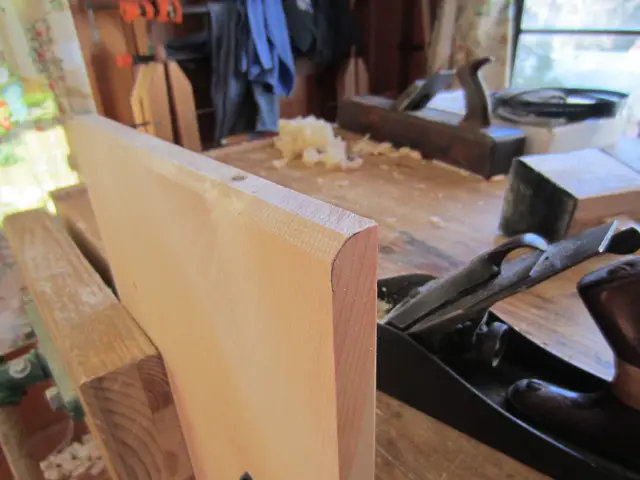What is Agatized Wood: Uncovering Its Geological Wonder
Agatized wood is a marvel of nature, a rare and exquisite form of fossilized wood that has captured the imagination of collectors, geologists, and nature enthusiasts alike. Known for its stunning array of colors and patterns, as well as its remarkable durability and beauty, agatized wood is a truly unique and captivating natural wonder.
What is Agatized Wood?
Agatized wood, also known as agate wood, is a type of fossilized wood that has been replaced by agate, a variety of microcrystalline quartz. This process, known as silicification, occurs when wood becomes buried in soil and water and over time, the organic materials within the wood are replaced by minerals such as silica, resulting in a stone that retains the original structure and appearance of the wood, but with the vibrant colors and patterns of agate.
Agatized wood is typically found in areas with volcanic activity, where mineral-rich waters flow through the soil and rock, carrying silica and other minerals that gradually replace the organic materials in the wood. Over millions of years, the once-living wood is transformed into a stunning and durable form of fossilized gemstone, preserving the intricate details of the original wood grain while taking on the vivid hues and bands of agate.
The Formation Process
The formation of agatized wood is a complex and fascinating process that unfolds over millions of years. It begins with the burial of wood in sediment, where it becomes immersed in a solution rich in silica and other minerals. Over time, the organic compounds within the wood decay, leaving behind a porous structure that is gradually filled in by the infiltrating minerals. As the minerals precipitate out of the solution, they form intricate patterns and structures within the wood, creating the stunning array of colors and bands that make agatized wood so prized and sought after.
Characteristics and Colors
Agatized wood is known for its remarkable range of colors and patterns, with specimens exhibiting hues from vibrant reds and oranges to soft blues and greens, as well as mesmerizing bands and swirls that showcase the natural beauty of the original wood grain. The formation process of agatized wood can also lead to the inclusion of other minerals, adding further depth and complexity to the stone. Each piece of agatized wood is truly one-of-a-kind, with its own unique combination of colors and patterns that reflect the specific conditions and minerals present during its formation.
The durability and hardness of agate, combined with the organic patterns of the original wood, make agatized wood a prized material for use in jewelry, carvings, and decorative objects. Its unique beauty and fascinating origins have made it a cherished collector’s item and a sought-after material for artisans and craftspeople around the world.

Credit: www.reddit.com
Uses and Applications
Agatized wood is highly valued for its beauty and durability, making it a popular choice for a wide range of applications. Jewelry makers often incorporate agatized wood into their designs, using its stunning colors and patterns to create unique and eye-catching pieces. The hardness of agate also makes it well-suited for use in carvings, beads, and cabochons, where its durability and natural beauty can be showcased to great effect.
Beyond its use in jewelry and decorative items, agatized wood is also prized by collectors and enthusiasts who appreciate its unique geological origins and the fascinating story it tells about the natural history of our planet. Museums and educational institutions often display specimens of agatized wood, using them to teach visitors about the processes of fossilization and the incredible diversity of the natural world.
The Historical Significance
Agatized wood offers a remarkable window into the ancient past, providing insights into the flora and ecosystems of bygone eras. When we hold a piece of agatized wood, we are not just admiring its beauty; we are also holding a tangible connection to the distant past, a relic of a time when the world looked very different from what we see today.
By studying agatized wood and other forms of fossilized flora, scientists and researchers can piece together a more complete picture of the ancient world, shedding light on the plants and environments that existed long before human civilization arose. This historical significance adds another layer of fascination to agatized wood, transforming it from a mere geological curiosity into a valuable tool for understanding the natural history of our planet.
Frequently Asked Questions On What Is Agatized Wood: Uncovering Its Geological Wonder
What Is Agatized Wood?
Agatized wood is fossilized wood where the organic material has been replaced by agate, a form of chalcedony.
How Does Agatized Wood Form?
Agatized wood forms when wood becomes buried in sediment and over time, mineral-rich water seeps into the wood, replacing the organic material with silica.
What Are The Characteristics Of Agatized Wood?
Agatized wood often exhibits vibrant colors, intricate patterns, and a smooth, polished surface due to the replacement of the wood’s cellular structure by agate.
Where Is Agatized Wood Commonly Found?
Agatized wood is commonly found in areas with ancient volcanic activity, such as the Petrified Forest National Park in Arizona, where it is abundant.
Conclusion
Agatized wood is a natural wonder that continues to captivate and inspire people around the world. Its stunning beauty, remarkable durability, and fascinating geological origins make it a truly unique and treasured material, cherished for its rarity and its ability to connect us to the ancient past. Whether as a piece of jewelry, a work of art, or a scientific specimen, agatized wood serves as a testament to the enduring power and beauty of the natural world, and a reminder of the countless marvels still waiting to be discovered beneath the earth’s surface.





